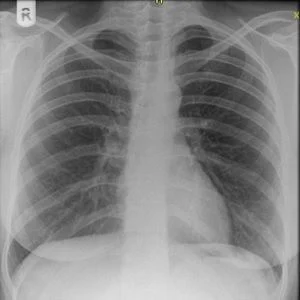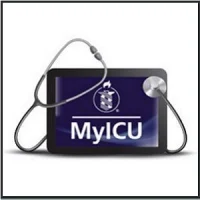In the intensive care setting, a restrictive approach to ordering chest x-rays can provide positive outcomes, according to a study from Mount Sinai Beth Israel, in New York, NY. Results found that a restrictive approach led to large decreases in total chest x-rays (CXRs) ordered, correcting for both total number of patients and ventilator days.
A restrictive approach to ordering chest x-rays in the intensive care unit (ICU) appears to be a safe practice that leads to a significant reduction in radiation exposure and ICU operating costs, according to researchers. The study is published in the CHEST Journal, an official publication of the American College of Chest Physicians.
Chest radiographs are routinely performed in the ICU for mechanically ventilated patients; however, the utility of this practice remains unclear and is surely not evidence based. Faced with rising costs of modern medicine, intensivists must balance delivering both excellent and cost conscious care.
See also:Omitting Routine Chest Radiographs in Intensive Care Units
A quality improvement inititative recommending a restrictive approach to ordering CXRs was implemented at a teaching hospital in January 2012. It consisted of monthly education for ICU providers on more focused indications for CXR use including ICU admission, post procedure, or change in clinical status. A retrospective review was later conducted of all ICU patients from 2011-2014 to examine the effectiveness of the initiative.
According to the results, implementation of a restrictive approach to ordering CXRs led to large decreases in the total number of CXRs ordered while corrected for both total numbers of patients and ventilator days. The researchers observed a 164 percent reduction in total number of CXRs ordered between 2011 and 2014. In addition, there was no negative impact on total number of patient ventilator days, length of ICU stay, and other outcomes.
"A restrictive approach to ordering chest x-rays in the ICU appears to be a safe practice," says lead researcher Jason Filopei, MD, Mount Sinai Beth Israel. "We believe it will lead to a significant saving of hospital resources."
Source: American College of Chest Physicians
Image credit: Flickr.com
A restrictive approach to ordering chest x-rays in the intensive care unit (ICU) appears to be a safe practice that leads to a significant reduction in radiation exposure and ICU operating costs, according to researchers. The study is published in the CHEST Journal, an official publication of the American College of Chest Physicians.
Chest radiographs are routinely performed in the ICU for mechanically ventilated patients; however, the utility of this practice remains unclear and is surely not evidence based. Faced with rising costs of modern medicine, intensivists must balance delivering both excellent and cost conscious care.
See also:Omitting Routine Chest Radiographs in Intensive Care Units
A quality improvement inititative recommending a restrictive approach to ordering CXRs was implemented at a teaching hospital in January 2012. It consisted of monthly education for ICU providers on more focused indications for CXR use including ICU admission, post procedure, or change in clinical status. A retrospective review was later conducted of all ICU patients from 2011-2014 to examine the effectiveness of the initiative.
According to the results, implementation of a restrictive approach to ordering CXRs led to large decreases in the total number of CXRs ordered while corrected for both total numbers of patients and ventilator days. The researchers observed a 164 percent reduction in total number of CXRs ordered between 2011 and 2014. In addition, there was no negative impact on total number of patient ventilator days, length of ICU stay, and other outcomes.
"A restrictive approach to ordering chest x-rays in the ICU appears to be a safe practice," says lead researcher Jason Filopei, MD, Mount Sinai Beth Israel. "We believe it will lead to a significant saving of hospital resources."
Source: American College of Chest Physicians
Image credit: Flickr.com
References:
Filopei J et al. (2015) Quality Improvement Project to Reduce Unnecessary Chest X-ray in a Medical Intensive Care Unit. Chest. October
2015;148(4_MeetingAbstracts):475A. doi: 10.1378/chest.2268396
Latest Articles
healthmanagement, chest x-rays, intensive care unit, ICU, ventilator, cost savings, radiation, radiography
In the intensive care setting, a restrictive approach to ordering chest x-rays can provide positive outcomes, according to a study from Mount Sinai Beth Israel, in New York, NY. Results found that a restrictive approach led to large decreases in total che










